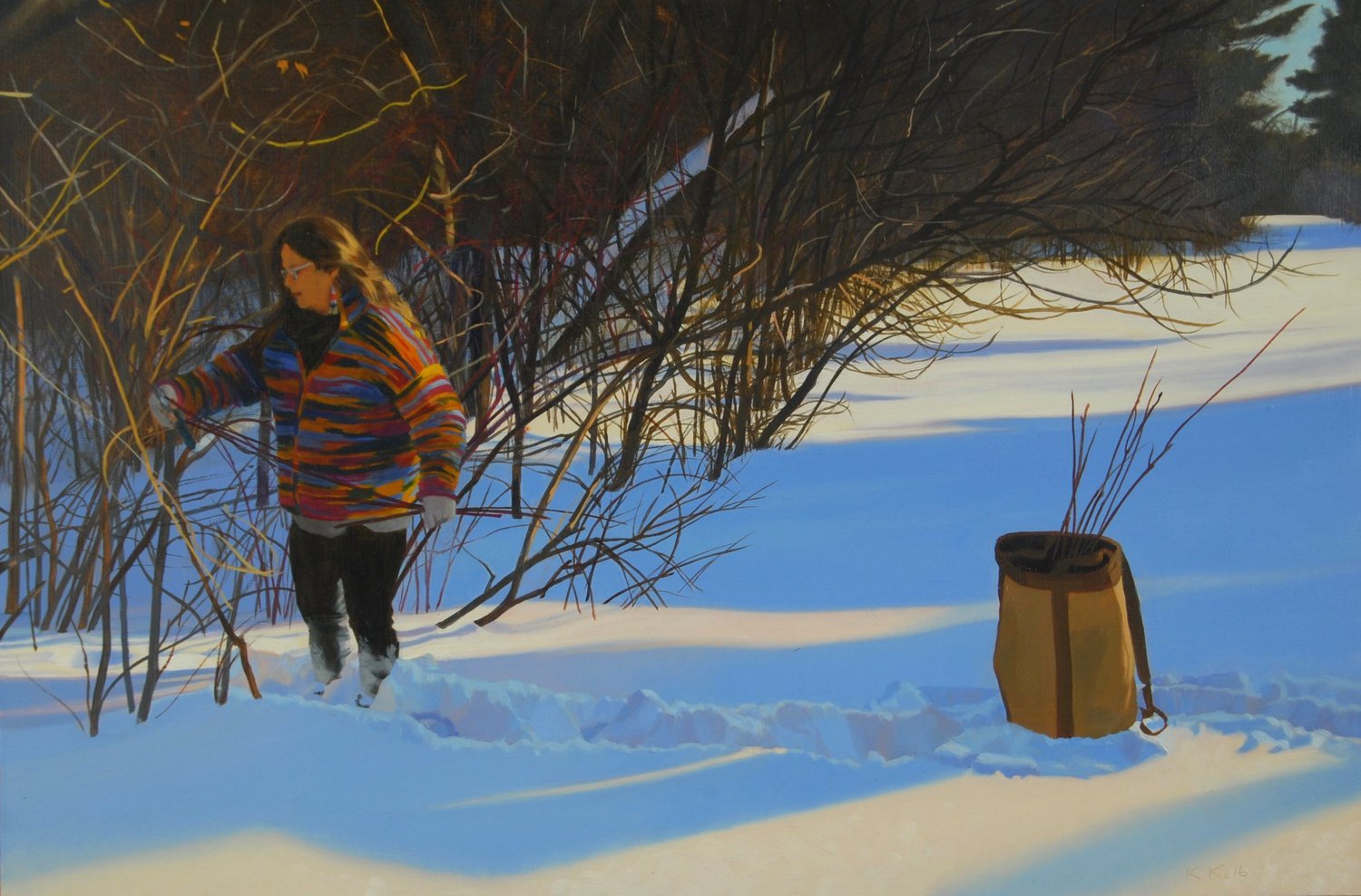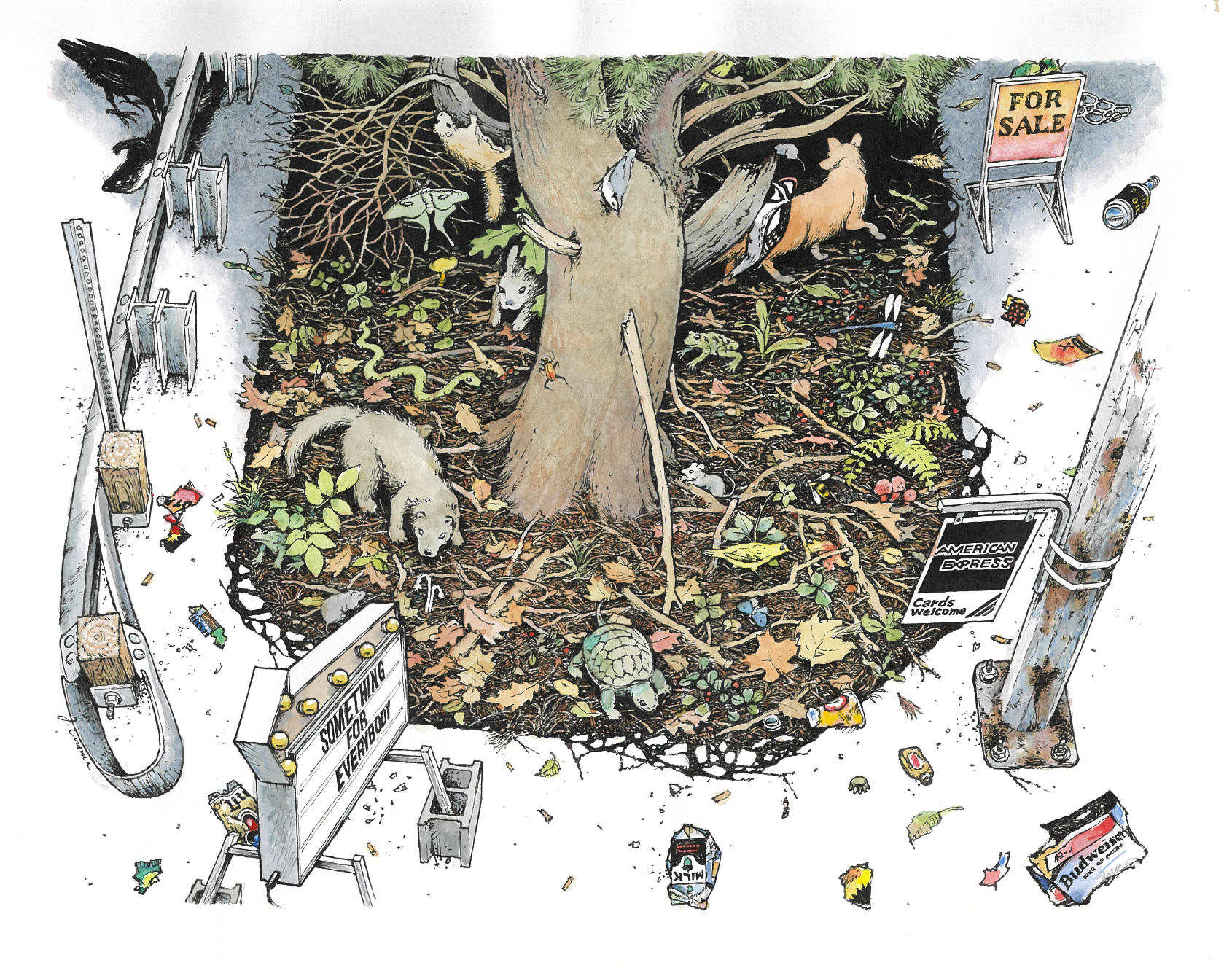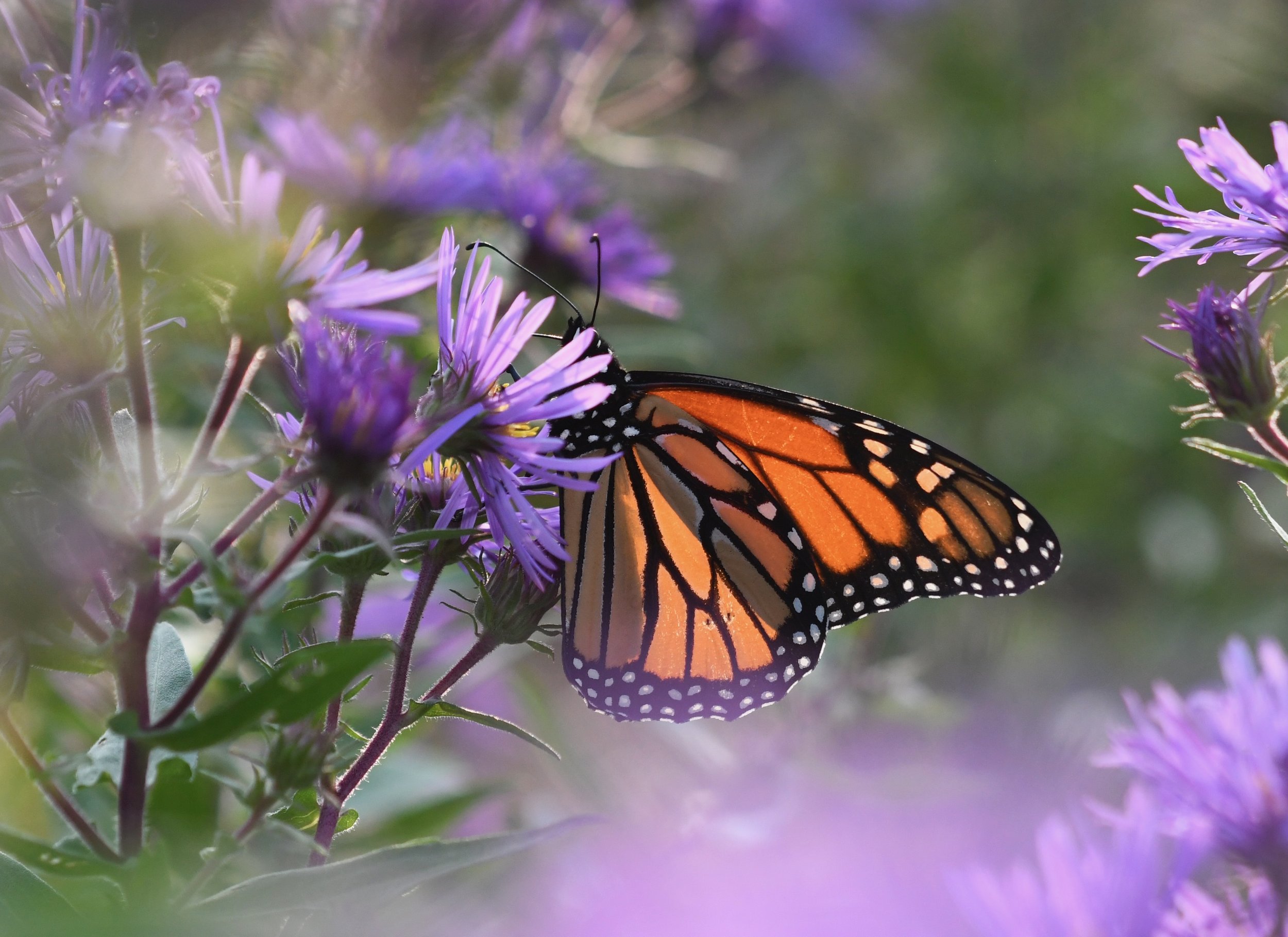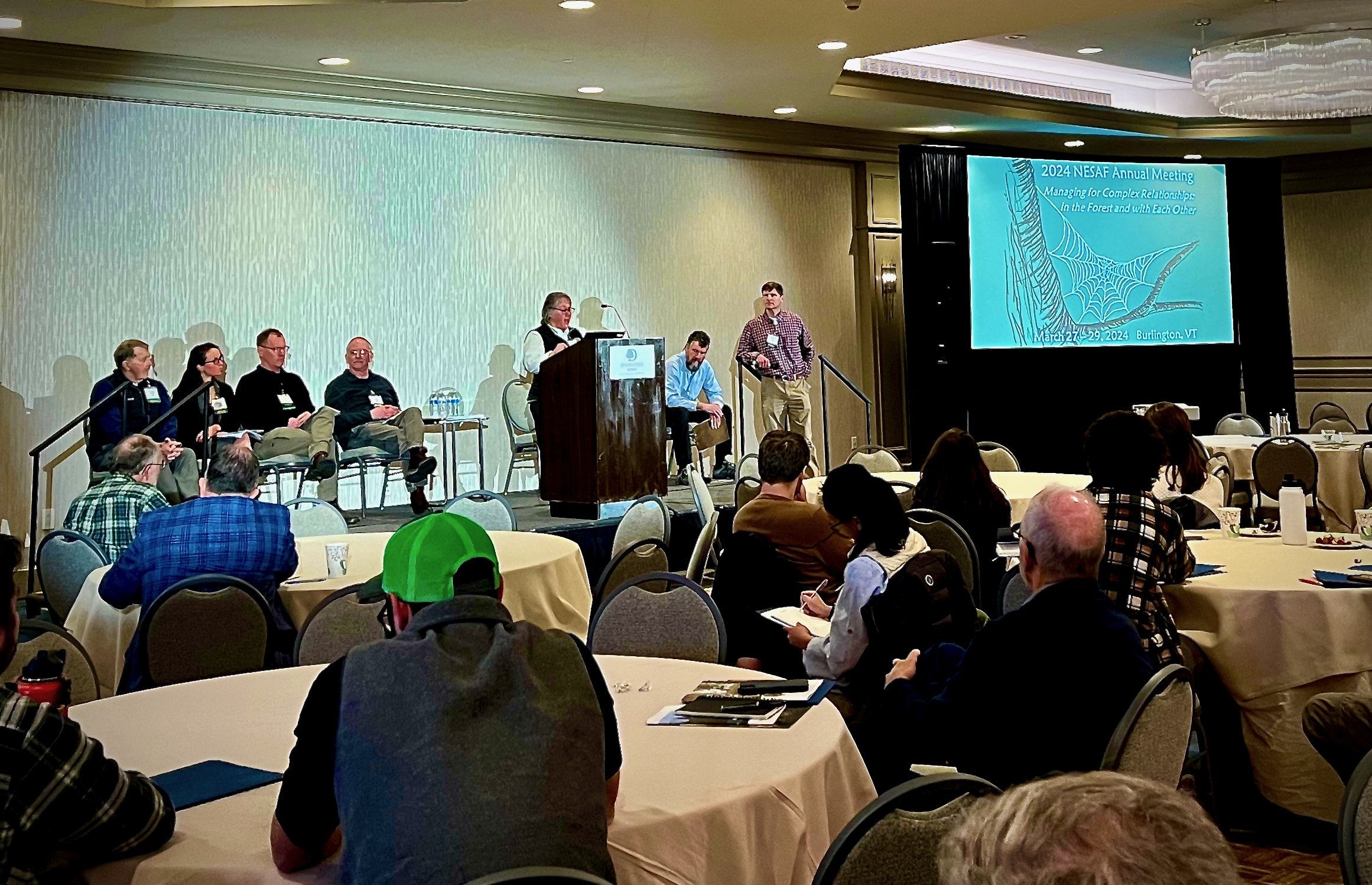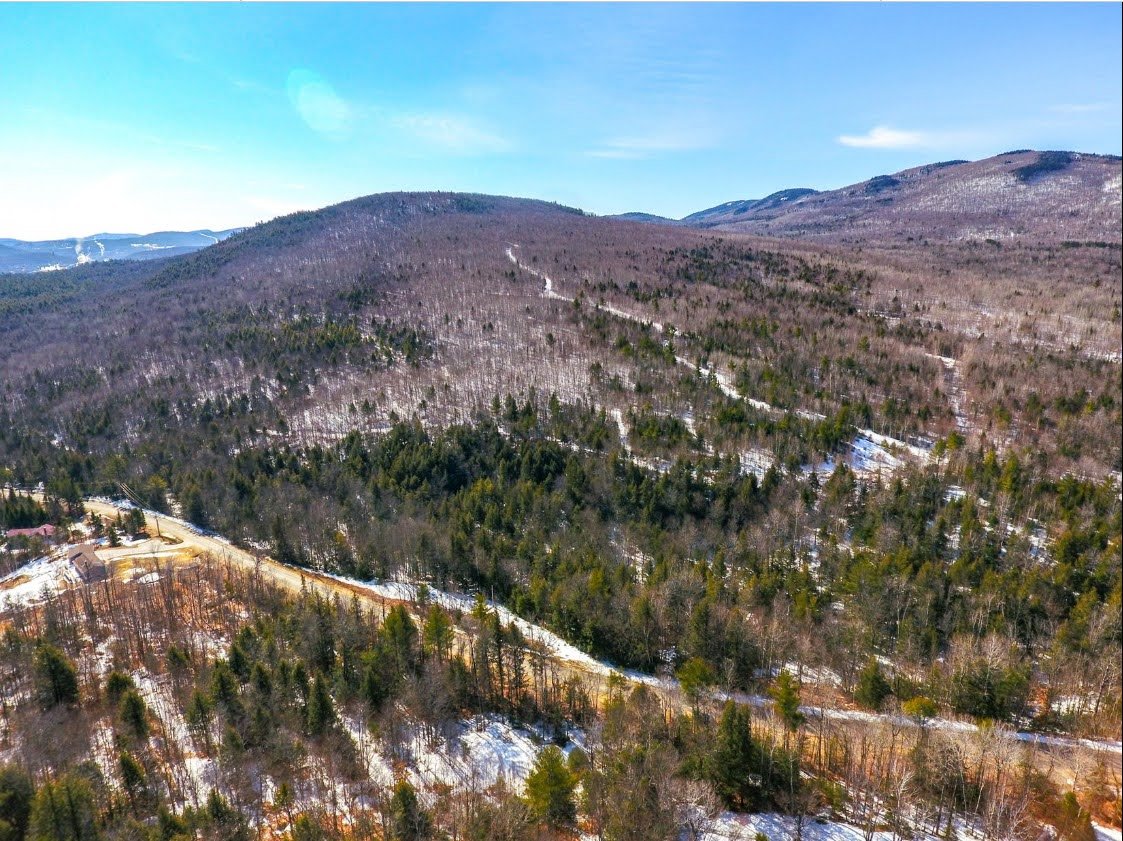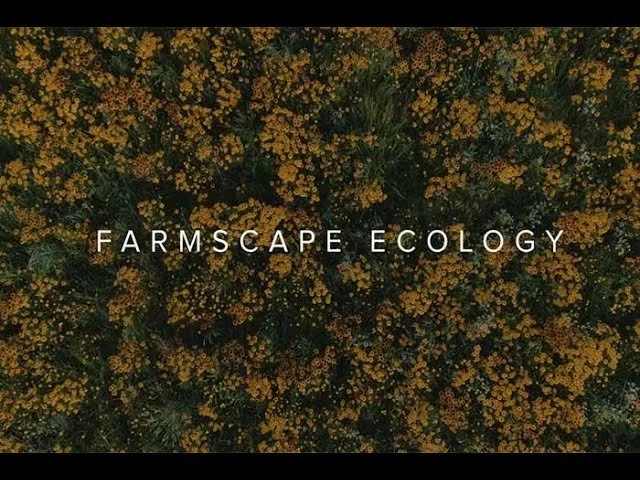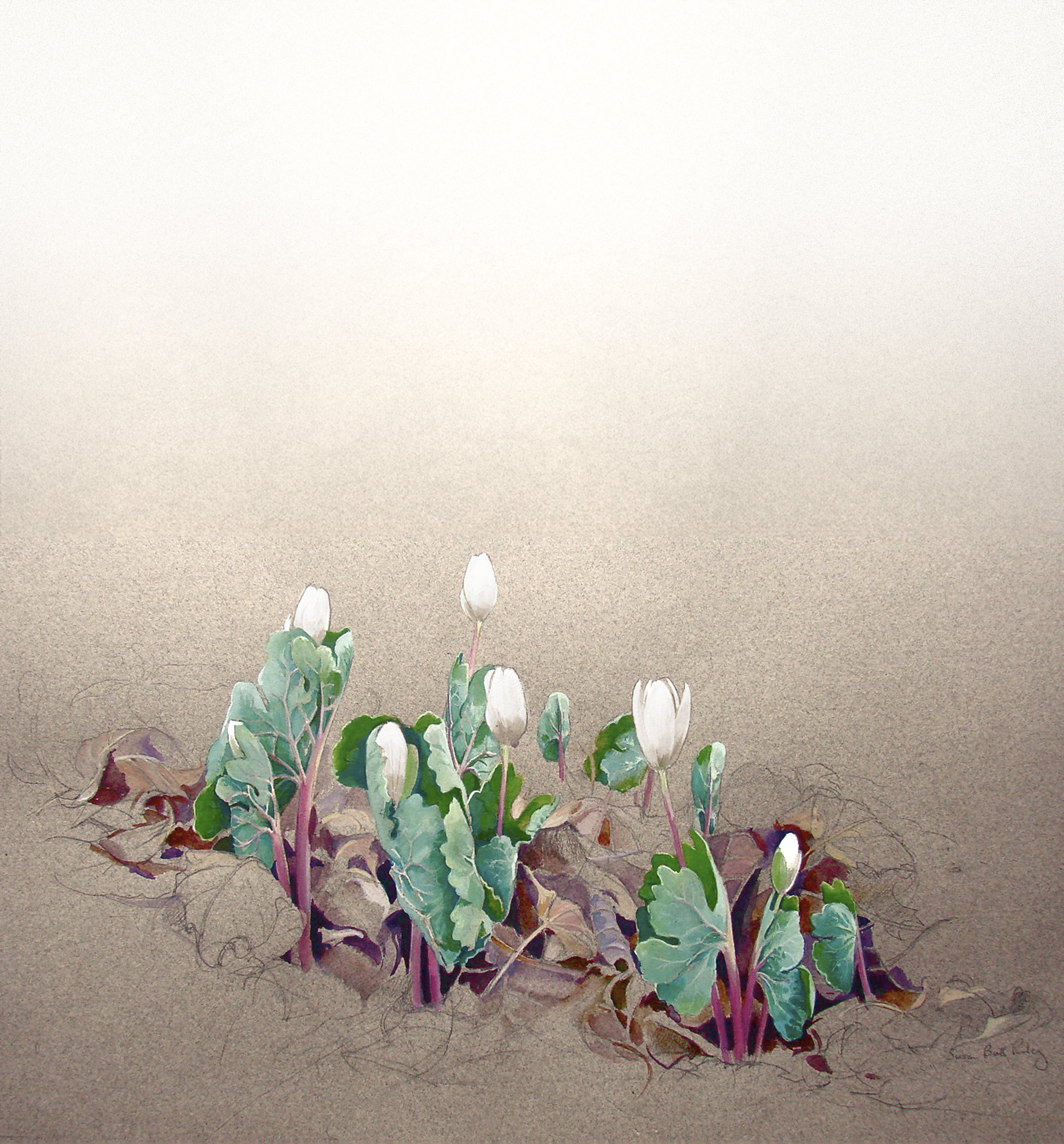
ISSUE #3 • SPRING 2024
From the
Ground Up
Conversations about conservation, climate, and communities in New England.
Artwork by Susan Bull Riley - “bloodroot” - View Full ImageNOTE FROM OUR EDITORS
The climate crisis has exposed a need for a dramatically different, more integrated approach to conservation. While people have lived in reciprocity with land and water for millenia, unchecked development and destructive practices of the past century have threatened the natural systems and society itself here in New England and around the world. Each season, we share stories, conversations, research and perspectives that explore the inextricable connections between conservation, climate, and communities — human and wild.
Our hope is to inspire action and support for policies and practices that protect New England’s Wildlands, Woodlands, Farmlands & Communities.
FEATURE • ISSUE 3
The White Monsters
By Judy Dow
BACKGROUND ARTWORK: "Judy Dow collecting red osier dogwood" by KATHLEEN KOLBPepe lived on the edge of town, high up on the bluff overlooking the Intervale and the Winooski River in a place called Moccasin Village. Moccasin Village was built on the top of an ancient sand dune nestled between the Intervale and Lake Champlain. All 20 or so families living in Moccasin Village were French Indian people who had decided to stop traveling back and forth to Canada and settle down in one place; in 1886 Moccasin Village was called home. “Times were changing,” Pepe used to say, but living next to the Intervale was perfect because people could still hunt, fish, and gather off this open land. “Intervale” is an old English word that describes a long, narrow valley between two high points with a river running down the middle. To us, it was the common pot, a huge bowl of food. This particular Intervale is called the Winooski Intervale. Burlington, Colchester, and Winooski surround the 1,700 acres. Outside of New England, people never use this word to describe the land.
FEATURE • ISSUE 3
Looking for Balance: Wildlands, Woodlands, and Wood Consumption
Reflections on a New Report, Beyond the ‘Illusion of Preservation’
By Caitlin Littlefield, Brian Donahue, David Foster, Anthony D'Amato, Kenneth Lautsen, and Brian Hall
With Reflections by Michael Snyder, Lincoln Fish, Julie Renaud Evans, and David Publicover
BACKGROUND ARTWORK: "Watershed, Summer Morning" by KATHLEEN KOLBThe forests of New England support humans and non-humans alike in countless ways, as they have for thousands of years. It is therefore heartening to see a growing recognition of the importance of forests, as the planet warms, as species disappear, and as our connections with nature and with one another fray. We increasingly look to our forests as a “natural climate solution” and as inextricably linked with protecting biodiversity.
At the same time, wood from our forests also remains a valuable renewable resource we all rely upon and a key component of an emerging bioeconomy that can help mitigate climate change. And so, while pursuing goals to preserve more wild forests—which we, the authors, wholeheartedly support—we must just as steadfastly protect productive forests and seek to improve the standard of that production, right here in our own backyard. Despite covering 80 percent of the region, only a quarter of our forests are formally protected today; the rest lie vulnerable to fragmentation and development.
Conversations
A Focus on Wildlife Conservation and Biodiversity
by David Foster
Since its 2005 origin, Wildlands and Woodlands (W&W; now Wildlands, Woodlands, Farmlands & Communities, or WWF&C) seldom focused in detail on the conservation of biodiversity overall, or of particular wildlife species, for many good reasons. Though important areas of conservation, neither was a strength of our group, which centered on forest, landscape, and historical ecology, and both were already championed by many collaborating organizations and agencies.
Agroecology as Faith
Thoughts on Farming With and For Nature
by Conrad Vispo
Lest the title immediately put you off, let me explain that it is not meant to be demeaning of either agroecology or religion. Rather, my point is that, as with our lives, making sense of something as complex as an agrarian landscape that works ecologically and also socioeconomically requires not just observation but also faith. It is a path as much as a fixed outcome. Science is one guide along that path, but so too is collaboration and a vision of how the world works that must extend beyond peer-reviewed scientific articles, that must be both more parochial and more global in worldview.
Wildlands and Wildlife
Whose Values Count?
by Walter Medwid
A recent Bioscience paper on stemming the biodiversity crisis framed the growing debate over the role of state fish and wildlife agencies quite succinctly. The authors stated, “We are not concerned that state agencies value hunting; nor do we claim that state agencies do nothing to restore native wildlife. Rather, our concern is that, given the magnitude of the problem … they do too little for the biodiversity crisis, and in comparison, they spend too much effort on the promotion of wildlife-associated recreation. In short, agencies tend to prioritize recreation over the restoration and conservation of wildlife.”
Policy Desk
New England Policy Chronicle
By Alex Redfield
A key goal of this publication, along with sharing information and stories about the relationships between society and nature, is to inspire readers to engage with local advocates and policymakers in support of a future that reflects the values of equity and diversity in our society, in our landscape, and in the ecosystems where we live. We hope the Policy Desk section of From the Ground Up becomes a useful repository of inspiring actions and opportunities for readers across New England.
Conservation in Action
Wild Attention for Wildlands
By Marissa Latshaw and Brian Hall
The May 2023 release of the report, Wildlands in New England: Past, Present, and Future, has helped to catalyze a growing awareness of Wildlands and the important role they play in mitigating climate change, biodiversity loss, and threats to human health and safety. Today, there is a significant increase in support of Wildlands, evidenced by an increase in public policies and funding initiatives, as well as in private sector awareness and support.
The Wildlands in New England report outlines the urgent need to proactively consider Wildlands protection as part of a balanced, integrated approach to conservation and land use that also includes actively managed woodlands, farmlands, and communities.
Read, Watch, Listen
The Bookshelf
Essential reading from our editors and contributors.
ARTWORK BY JACO TAYLORBulletin Board
Events, updates, and announcements from our partners and friends from around the region.
Want to join the conversation?
We invite your questions, reactions, debates, suggestions, and contributions. Our editorial team is committed to expanding the chorus of voices needed to safeguard the health, resiliency, and vibrancy of New England’s communities—both human and wild.
Reflections
Artistic expressions that reflect Nature's complexity, simplicity, and beauty.
Morning Work on the Landing, 2010. Watercolor on paper. © Kathleen KolbMorning Work on the Landing
A POEM BY VERANDAH PORCHE
for Larry Sherman & Mark Sherman (1976-2013)
Dawn, the chickadees kick in.
Father and son are glad to be
Done with farming for nothing:
24/7 starving to death.
And zero ain’t so bad when
You’re dressed for it.
The grapple holds aloft
A log longer than the man
Who felled it, snow on the bark.
The loader will never tuck this
One in the truck bed, and the son
Won’t snug it with his bar.
Gazing back, the father grins:
This painting is right on the money:
The red hat, the blue cab,
The shadow they stand in
Between fell and grapple.
Everyone’s life is a book, he adds.
What leaves his son won’t turn
Let’s overlook,
Like this valley or the empty
Mountain Dew not littering
The forest floor.

